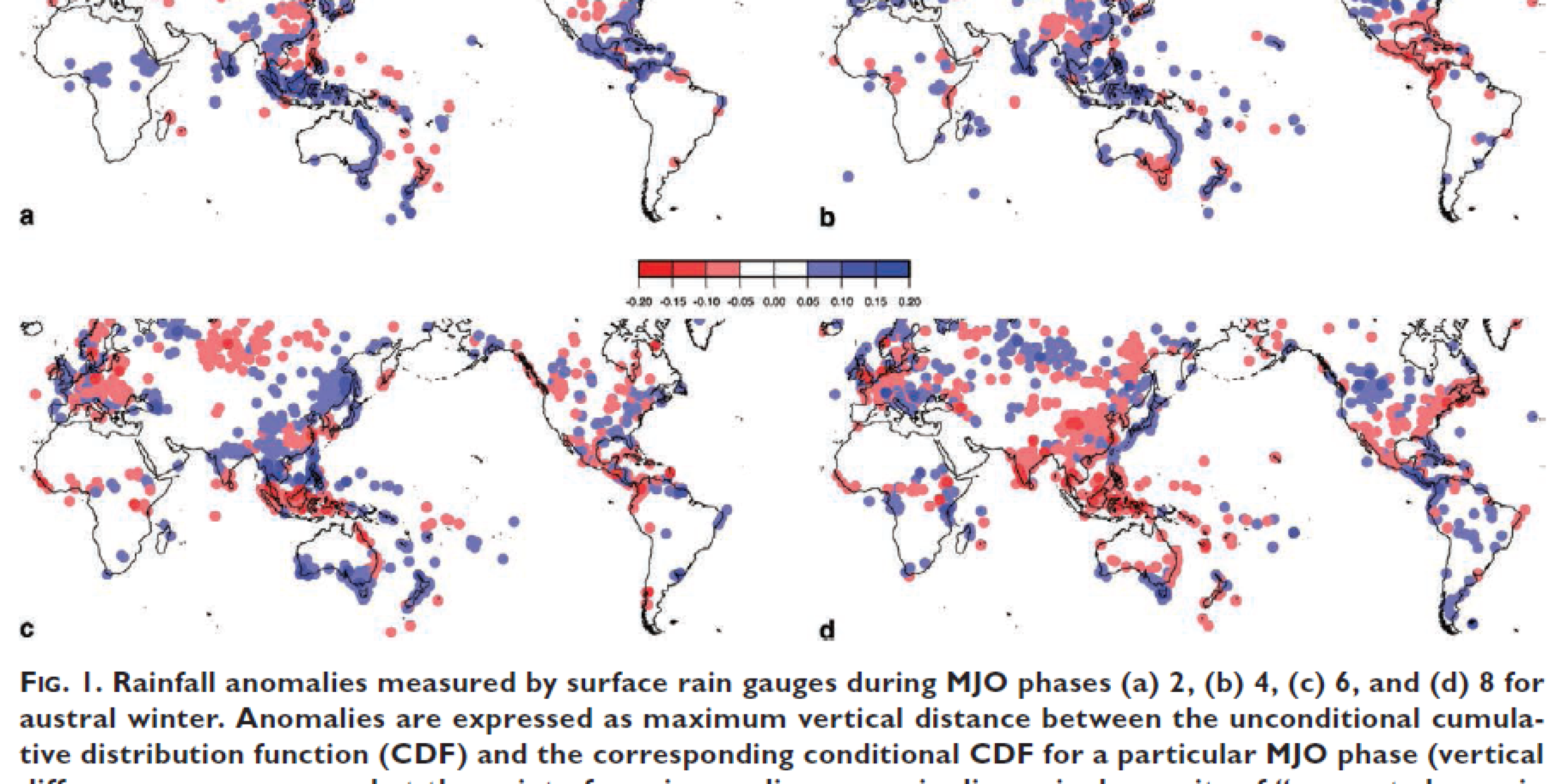A paper funded by the Climate Program Office’s Modeling, Analysis, Predictions and Projections (MAPP) and Earth Systems Sciences (ESS) programs was published in the Bulletin of the American Meteorological Society (BAMS) in December. The paper – titled “Madden-Julian Oscillation – Bridging Weather and Climate” – shows that the MJO, which sits in a time frame between weather (less than 10 days) and climate (90 days and longer), can affect both weather and climate and plays a critical role in connecting or bridging the two.
Improved MJO forecasting will have a direct impact on both local and global society by improving predictions of tropical cyclones, weather regimes, ENSO, and other phenomena – including tornadoes and floods.
The article lays out that in order to achieve better prediction, weather and climate must be treated as a continuum (i.e., seamless weather-climate connection and prediction) by including MJO and intraseasonal variability. This societal need for better weather and climate prediction must be met with improved understanding and forecasting of the MJO. Understanding the Madden-Julian Oscillation, the weather-climate continuum, and improving climate models for better prediction are important and exciting goals for CPO, which has been long supporting MJO research and studies like the one highlighted here.
The ESS/CVP has funded the DYNAMO Field Project, which aims to better understand the initiation of the MJO for the purpose of improving current prediction skill and the seasonal to interannual outlooks. An international and interagency project involving NOAA-funded scientists deployed an enhanced array of scientific equipment for studying the ocean and atmosphere over a large area of the Indian Ocean. They collected observations from instruments on ships, aircraft, moorings, and islands during a six-month period when the MJO was both active and inactive. With a goal of improving forecast skill, MAPP funds research to improve the representation of the MJO in climate models and explore the influence of the MJO on climate over North America, especially the predictability of extremes.
To download a PDF of the article, CLICK HERE




Climate Program Office
Advancing scientific understanding of climate, improving society’s ability to plan and respond






Climate Program Office
Advancing scientific understanding of climate, improving society’s ability to plan and respond
Scroll to Top

